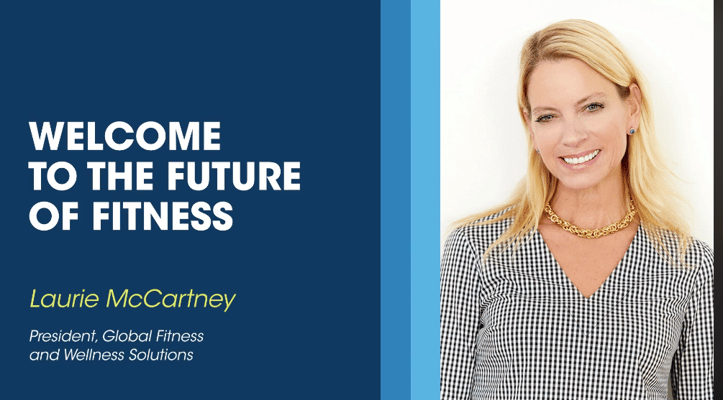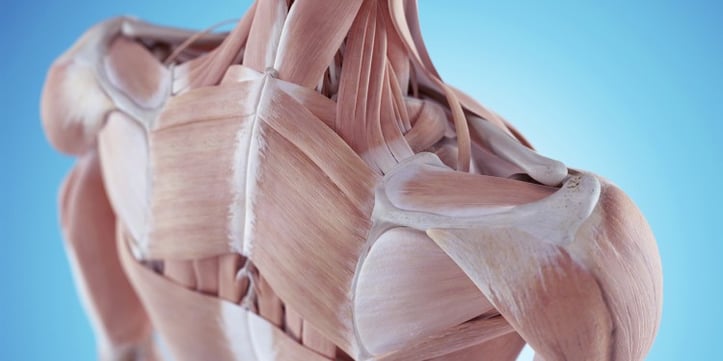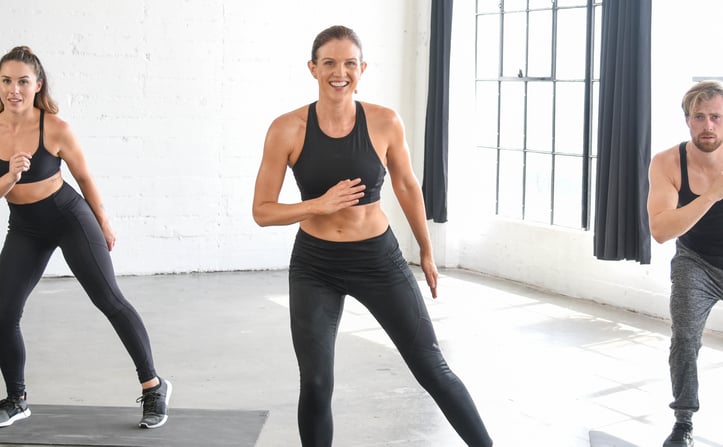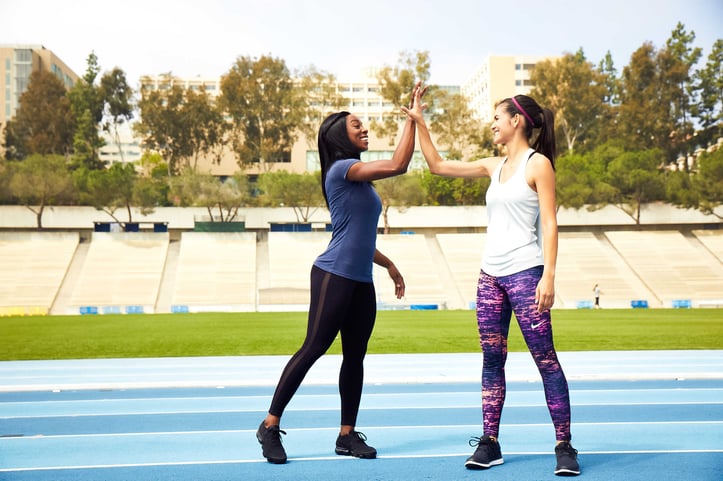
The Future of Fitness: A Guide for Beginners to Intermediates
Introduction
Welcome to the exciting world of fitness! In this blog post, we will explore the future of fitness and how you can take advantage of innovative training principles to achieve your goals. Whether you're a beginner looking to get started or an intermediate exerciser seeking to take your training to the next level, this guide is for you.
Understanding the Training Principles
To truly understand the future of fitness, it's important to grasp the underlying training principles that govern how our bodies adapt and change. Let's take a closer look at some key concepts:
Supercompensation
Supercompensation is the process by which our bodies adapt to the stress of exercise and become stronger and more efficient. When we exercise, we create a stimulus that causes microscopic damage to our muscle fibers. During the recovery period, our bodies repair and rebuild these fibers, making them stronger than they were before. This is known as supercompensation.
To maximize supercompensation, it's important to give your body enough time to recover between workouts. This means getting enough sleep, eating a balanced diet, and staying hydrated. It also means gradually increasing the intensity and volume of your workouts over time to avoid overtraining.
Strength Growth Mechanisms
There are several mechanisms by which our bodies grow stronger, including muscle hypertrophy, neural adaptation, and connective tissue adaptation. Muscle hypertrophy refers to an increase in muscle size, which occurs when we perform resistance exercises that overload our muscles. Neural adaptation refers to changes in the nervous system that allow us to recruit more muscle fibers and generate more force. Connective tissue adaptation refers to changes in the tendons and ligaments that support our muscles, which can improve joint stability and reduce the risk of injury.
To optimize strength growth, it's important to include a variety of resistance exercises in your training program, including compound exercises that work multiple muscle groups at once. It's also important to gradually increase the weight and intensity of your workouts over time to continue challenging your muscles.
Energy System Function
Our bodies have three energy systems that provide the energy we need to exercise: the phosphagen system, the glycolytic system, and the oxidative system. The phosphagen system provides energy for short, high-intensity activities such as sprinting and weightlifting. The glycolytic system provides energy for moderate-intensity activities such as running and cycling. The oxidative system provides energy for long, low-intensity activities such as walking and swimming.
To improve your energy system function, it's important to include a variety of exercises in your training program that target each of these energy systems. This can include interval training, which alternates between short bursts of high-intensity exercise and periods of rest or low-intensity exercise, as well as endurance training, which focuses on building aerobic capacity and endurance.
Unique Insights
In addition to the training principles outlined above, there are several unique insights that can help you take your fitness to the next level. Here are a few examples:
Training Adjustments for Different Body Types
Not everyone has the same body type, and what works for one person may not work for another. For example, if you have a mesomorph body type, you may be naturally muscular and have a high metabolism. In this case, you may want to focus on strength training and high-intensity interval training to build muscle and burn fat. On the other hand, if you have an ectomorph body type, you may be naturally thin and have a fast metabolism. In this case, you may want to focus on endurance training and plyometrics to build muscle and improve your cardiovascular health.
Common Training Mistakes and How to Avoid Them
Even the most experienced exercisers make mistakes from time to time. Here are some common training mistakes to avoid:
- Overtraining: Overtraining can lead to fatigue, injury, and a decrease in performance. To avoid overtraining, make sure to give your body enough time to recover between workouts and listen to your body's signals.
- Poor Form: Poor form can lead to injury and a decrease in the effectiveness of your workouts. To avoid poor form, make sure to use proper technique when performing exercises and focus on quality over quantity.
- Not Eating Enough: Eating a balanced diet is essential for optimal performance and recovery. To avoid not eating enough, make sure to eat plenty of fruits, vegetables, lean proteins, and complex carbohydrates.
- Not Getting Enough Sleep: Sleep is essential for recovery and growth. To avoid not getting enough sleep, make sure to get at least 7-8 hours of sleep per night and establish a regular sleep schedule.
Using Sports Psychology to Improve Performance
Sports psychology is the study of how the mind affects performance in sports and exercise. By using sports psychology techniques, you can improve your motivation, focus, and confidence, which can lead to better performance and results. Here are some sports psychology techniques you can try:
- Visualization: Visualization is the process of creating mental images of yourself performing a task or achieving a goal. By visualizing yourself succeeding, you can increase your confidence and motivation.
- Positive Self-Talk: Positive self-talk is the process of using positive statements to encourage and motivate yourself. By using positive self-talk, you can increase your confidence and reduce stress and anxiety.
- Goal Setting: Goal setting is the process of setting specific, measurable, achievable, relevant, and time-bound (SMART) goals. By setting goals, you can increase your motivation and focus and track your progress over time.
Building a Training Plan
Now that you have a better understanding of the training principles and unique insights, it's time to build a training plan that works for you. Here's a sample training plan for beginners to intermediates:
Monday: Upper Body Strength Training
- Warm-up: 5-10 minutes of light cardio (e.g., jogging, cycling, or jumping jacks)
- Push-ups: 3 sets of 10-12 reps
- Biceps curls: 3 sets of 10-12 reps
- Triceps dips: 3 sets of 10-12 reps
- Rows: 3 sets of 10-12 reps
- Cool-down: 5-10 minutes of stretching
Tuesday: Lower Body Strength Training
- Warm-up: 5-10 minutes of light cardio (e.g., jogging, cycling, or jumping jacks)
- Squats: 3 sets of 10-12 reps
- Lunges: 3 sets of 10-12 reps per leg
- Deadlifts: 3 sets of 10-12 reps
- Calf raises: 3 sets of 15-20 reps
- Cool-down: 5-10 minutes of stretching
Wednesday: Cardio and Core Training
- Warm-up: 5-10 minutes of light cardio (e.g., jogging, cycling, or jumping jacks)
- **30 minutes of moderate-intensity cardio (e.g., running, cycling, or swimming)
- Plank: 3 sets of 30-60 seconds
- Russian twists: 3 sets of 10-12 reps per side
- Bicycle crunches: 3 sets of 10-12 reps per side
- Cool-down: 5-10 minutes of stretching
Thursday: Rest or Active Recovery
- **Take a day off from exercise or engage in light activities such as walking, yoga, or stretching to promote recovery.
Friday: Upper Body Strength Training
- Warm-up: 5-10 minutes of light cardio (e.g., jogging, cycling, or jumping jacks)
- Pull-ups or assisted pull-ups: 3 sets of 8-10 reps
- Shoulder presses: 3 sets of 10-12 reps
- Lateral raises: 3 sets of 10-12 reps
- Rear delt flyes: 3 sets of 10-12 reps
- Cool-down: 5-10 minutes of stretching
Saturday: Lower Body Strength Training
- Warm-up: 5-10 minutes of light cardio (e.g., jogging, cycling, or jumping jacks)
- Step-ups: 3 sets of 10-12 reps per leg
- Bulgarian split squats: 3 sets of 10-12 reps per leg
- Good mornings: 3 sets of 10-12 reps
- Hamstring curls: 3 sets of 10-12 reps
- Cool-down: 5-10 minutes of stretching
Sunday: Rest or Active Recovery
- **Take a day off from exercise or engage in light activities such as walking, yoga, or stretching to promote recovery.
Overcoming Plateaus
As you progress in your fitness journey, you may encounter plateaus, which are periods of time when you stop making progress or see a decrease in performance. Here are some tips for overcoming plateaus:
- Change Your Routine: Your body adapts to the stress of exercise over time, so it's important to change your routine regularly to continue challenging your muscles. This can include changing the exercises you do, the number of sets and reps you perform, or the intensity of your workouts.
- Increase the Intensity: If you've been doing the same workouts for a while, it may be time to increase the intensity. This can include increasing the weight you lift, the number of reps you perform, or the speed at which you perform the exercises.
- Add Variety: Adding variety to your workouts can help keep your body challenged and prevent boredom. This can include trying new exercises, using different equipment, or participating in different types of classes or activities.
- Get Enough Rest and Recovery: Rest and recovery are essential for optimal performance and progress. Make sure to get enough sleep, eat a balanced diet, and give your body enough time to recover between workouts.
- Stay Motivated: Staying motivated is key to overcoming plateaus and achieving your goals. Find a workout buddy, set goals for yourself, and reward yourself for your progress to stay motivated and on track.
Training Safety
Safety should always be your top priority when exercising. Here are some tips for staying safe during your workouts:
- Warm up and cool down: Warming up before your workout and cooling down afterwards can help prevent injury and reduce muscle soreness.
- Use proper form: Using proper form when performing exercises can help prevent injury and ensure that you're getting the most out of your workouts.
- Start slowly and gradually increase the intensity: Starting slowly and gradually increasing the intensity of your workouts can help prevent injury and reduce the risk of overtraining.
- Listen to your body: If you experience pain, discomfort, or fatigue during your workout, stop and rest. Don't push yourself too hard or ignore your body's signals.
- Use appropriate equipment: Using appropriate equipment when performing exercises can help prevent injury and ensure that you're getting the most out of your workouts.
Diet and Nutrition
In addition to exercise, diet and nutrition play a crucial role in your overall health and fitness. Here are some tips for eating a healthy, balanced diet:
- Eat plenty of fruits and vegetables: Fruits and vegetables are rich in vitamins, minerals, and antioxidants, which are essential for optimal health and performance.
- Choose lean proteins: Lean proteins such as chicken, fish, beans, and tofu are low in fat and high in protein, which is essential for building and maintaining muscle.
- Include complex carbohydrates: Complex carbohydrates such as whole grains, brown rice, and sweet potatoes are rich in fiber and nutrients, which can provide sustained energy for your workouts.
- Limit processed foods and sugary drinks: Processed foods and sugary drinks are high in calories, sugar, and fat, which can contribute to weight gain and other health problems.
- Stay hydrated: Drinking plenty of water is essential for optimal health and performance. Make sure to drink plenty of water before, during, and after your workouts.
Frequently Asked Questions
Q: How often should I exercise?
A: The frequency of your workouts depends on your goals, fitness level, and schedule. As a general rule, it's recommended that you exercise at least 3-4 times per week for at least 30 minutes per session.
Q: What should I eat before and after my workout?
A: Before your workout, it's important to eat a small, balanced meal that provides sustained energy for your workout. This can include a piece of fruit, a handful of nuts, or a small sandwich. After your workout, it's important to eat a meal that contains protein and carbohydrates to help repair and rebuild your muscles. This can include a chicken breast, a serving of brown rice, and a side of vegetables.
Q: How can I prevent injury?
A: To prevent injury, it's important to warm up before your workout, cool down afterwards, use proper form when performing exercises, start slowly and gradually increase the intensity, listen to your body, and use appropriate equipment.
Conclusion
The future of fitness is bright, and there are many innovative training principles and techniques that you can use to achieve your goals. By understanding the training principles, incorporating unique insights, building a training plan, overcoming plateaus, staying safe, and eating a healthy, balanced diet, you can take your fitness to the next level and achieve the results you've always wanted. So what are you waiting for? Start your fitness journey today and see the difference for yourself!

Fit vs Fat: Decoding Health's True Ruler

Pump Up Your Heart: Science-Driven Weight Loss

Wellness Technology: Your Path to Sustainable Weight Loss

A Sensible Guide to Dietary New Year's Resolutions

Prevent Shoulder and Rotator Cuff Injuries with Corrective Exercises

Overcome Fitness Plateaus: 4 Tips for Success

10 x 10 Thanksgiving Day Circuit: A Fitness Guide

Unleash Your Fitness Potential with Kit Rich's Training Secrets

The Future of Fitness: A Guide for Beginners to Intermediates

